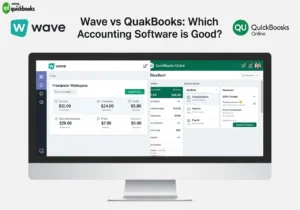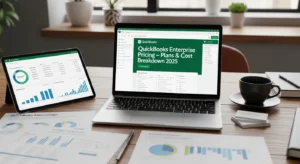Understanding Biweekly Pay Periods
How Many Biweekly Pay Periods in 2024 is a common question for employers and employees planning their finances. Biweekly pay periods are one of the most popular ways businesses handle payroll today. They operate on precise 14-day intervals, creating a consistent rhythm for both employers and employees. Understanding how many biweekly pay periods in 2024 there are can help with budgeting, tax planning, and payroll scheduling. This systematic approach to scheduling pay has become increasingly common across various industries, especially as businesses try to find a balance between efficient administration and happy employees.
How Biweekly Payroll Compares to Other Schedules
There are several options available when it comes to deciding how often employees get paid. Each option has its own unique qualities:
- Weekly payroll: Employees receive their wages every week, resulting in a total of 52 pay periods in a year. This method ensures that workers have the most frequent income distribution.
- Biweekly payroll: With this system, employees are paid every two weeks, resulting in 26 pay periods annually. It strikes a balance between frequency and administrative burden.
- Semimonthly payroll: In this case, employees are paid twice a month on specific dates (usually the 15th and last day). This results in 24 pay periods each year.
- Monthly payroll: As the name suggests, employees receive their wages once a month. While this method offers fewer payments (12 per year), each payment is larger.

Why Companies Choose Biweekly Payroll Systems
There are several reasons why businesses prefer biweekly schedules:
- Administrative Efficiency: Processing payroll 26 times per year reduces administrative workload compared to weekly schedules while maintaining reasonable payment frequency for employees.
- Cost-Effective Operations: Fewer payroll runs translate to reduced processing costs, bank fees, and administrative time investment.
- Employee Preference: Many workers appreciate the predictable every-other-week payment schedule, which aligns well with typical budgeting cycles and monthly expense management.
- Simplified Benefits Deductions: Biweekly schedules accommodate benefit deductions more seamlessly than semimonthly alternatives, particularly for health insurance and retirement contributions.
- Overtime Calculation Alignment: The 14-day period naturally aligns with federal overtime regulations, simplifying compliance for businesses tracking weekly overtime thresholds.
For organizations managing their payroll through comprehensive solutions like those offered by QBO Desktop, understanding these fundamental differences becomes crucial when determining optimal payroll frequency. The biweekly structure provides an ideal balance that satisfies both operational efficiency and employee expectations, making it a preferred choice for businesses of all sizes.

Number of Biweekly Pay Periods in 2024
The number of biweekly pay periods in 2024 follows the standard annual pattern of 26 pay periods. This consistent count occurs because 52 weeks divided by 2 equals exactly 26 biweekly cycles, making it the norm for most calendar years.
The Standard 26 Pay Period Structure
Each biweekly pay period spans exactly 14 days, creating a predictable rhythm for both employees and employers. The payroll calendar 2024 maintains this traditional structure:
- 26 total pay periods throughout the year
- Each period covering 14 consecutive days
- Paychecks distributed every two weeks
- Total coverage of 364 days (26 × 14 = 364)

Understanding the 27th Pay Period Phenomenon
While 2024 adheres to the standard 26-period schedule, the concept of 26 vs 27 pay periods deserves attention for long-term payroll planning. The 27th pay period occurs approximately every 11 years due to calendar mathematics.
Why the extra period happens:
- A standard year contains 365 days (366 in leap years)
- 26 biweekly periods account for only 364 days
- The remaining 1-2 days accumulate over time
- After roughly 11 years, these extra days create an additional pay period
Years with 27 pay periods typically include:
- 2020 (most recent occurrence)
- 2031 (next projected occurrence)
- Pattern continues every 10-12 years depending on leap year alignment
2024’s Position in the Cycle
Since 2020 featured 27 pay periods, 2024 sits comfortably in the middle of the cycle with the standard 26 periods. This predictability allows businesses using QuickBooks Desktop to maintain consistent payroll processing throughout the year without unexpected additional periods disrupting their financial planning.
Companies partnered with QBTechSS can rely on expert guidance to navigate these payroll cycles efficiently, ensuring
Understanding the 2024 Biweekly Payroll Calendar
The 2024 payroll calendar has a special setup that starts before the actual year begins. Most companies plan their biweekly payroll to start in late December of the previous year, creating a steady flow that continues throughout the entire fiscal year.
How Does It Start?
The first pay period for 2024 usually covers December 17, 2023, to December 30, 2023, with employees getting paid on January 5, 2024. This timing helps payroll departments stick to their regular processing schedules while also considering year-end holidays and administrative tasks.
Sample Pay Dates for 2024
Here’s a breakdown of when employees can expect their paychecks in 2024:
| Pay Period Dates Paycheck Date 1 | Dec 17-30, 2023 | Jan 5, 2024 |
| 2 | Dec 31, 2023-Jan 13, 2024 | Jan 19, 2024 |
| 3 | Jan 14-27, 2024 | Feb 2, 2024 |
| 4 | Jan 28-Feb 10, 2024 | Feb 16, 2024 |
How Does Processing Work?
Each pay period follows a set timeline: the work period lasts for two weeks, then there’s some time for processing before the actual paycheck goes out. This payroll schedule example shows the usual gap between when a pay period ends and when payment is made—typically around 3-7 business days depending on company policies and how payroll is processed.
Companies using QuickBooks Desktop can make this process much easier. QBTechSS is the top provider for QuickBooks Desktop and can help manage complicated payroll calendars. The software automatically figures out pay periods and creates accurate payroll reports, minimizing mistakes in scheduling.
With this biweekly structure in place, employees can expect their paychecks to arrive consistently every other Friday (or on whatever day has been designated as payday). This predictability benefits both employers and employees alike.
Understanding Three Paychecks in a Month: The Quirks of Biweekly Payrolls
The phenomenon of three paycheck months 2024 occurs when the biweekly payment schedule aligns perfectly with calendar months containing 31 days. This mathematical quirk happens because biweekly pay periods don’t align with monthly boundaries, creating occasional months where employees receive an extra paycheck months benefit.

When Do Three-Paycheck Months Occur in 2024?
Based on the standard biweekly schedule starting December 17, 2023, employees can expect three paychecks during specific months in 2024:
- March 2024: Pay dates falling on March 1, March 15, and March 29
- August 2024: Pay dates occurring on August 2, August 16, and August 30
These biweekly payroll quirks stem from the 14-day pay cycle intersecting with months that have enough days to accommodate three complete pay periods.
Impact on Employee Financial Planning
Receiving three paychecks in a single month creates both opportunities and challenges for employees:
Benefits for employees:
- Additional cash flow for debt reduction or savings goals
- Opportunity to build emergency funds
- Extra funds for large purchases or investments
Budgeting considerations:
- Monthly expenses remain constant despite increased income
- Need to avoid lifestyle inflation during three-paycheck months
- Importance of planning for the following month’s return to two paychecks
Employer Payroll Processing Implications
Three-paycheck months require careful attention from payroll departments. Employers must ensure accurate benefit deductions, tax withholdings, and overtime calculations remain consistent across all pay periods. The additional paycheck doesn’t change annual salary calculations but affects monthly cash flow projections for businesses.
Understanding how many biweekly pay periods in 2024 helps both employees and employers prepare for these calendar anomalies. QBO Desktop users can leverage advanced payroll features to manage these scheduling complexities, while QB Tech SS provides comprehensive support as the best QuickBooks desktop provider for handling biweekly payroll intricacies.
Implications of Biweekly Pay Periods on Employees and Employers in 2024
Employee Financial Management Considerations
Employee budgeting biweekly pay requires a different approach compared to monthly or semimonthly schedules. With 26 paychecks distributed throughout 2024, employees receive income every 14 days rather than at fixed monthly intervals. This paycheck frequency impact creates both opportunities and challenges for personal financial management.

The irregular monthly income pattern means some months deliver two paychecks while others provide three. Employees must adapt their budgeting strategies to accommodate this variation, often requiring them to:
- Set aside portions from three-paycheck months to cover expenses during two-paycheck periods
- Align bill due dates with paycheck arrival schedules
- Build larger emergency funds to manage cash flow gaps
- Calculate annual salary by multiplying biweekly gross pay by 26 rather than using monthly estimates
Financial planning with biweekly pay becomes more complex when managing fixed monthly expenses like rent, mortgage payments, and insurance premiums. Smart employees often allocate specific percentages of each paycheck to different expense categories, creating a systematic approach that accounts for the uneven monthly distribution.
Employer Administrative Impact
Biweekly payroll schedules create distinct operational requirements for employers throughout 2024. Processing payroll every two weeks means HR departments handle 26 separate payroll runs instead of 12 monthly cycles, significantly increasing administrative workload.
Key employer considerations include:
- Payroll processing timelines must accommodate 26 distinct cut-off dates and payment schedules
- Benefits deductions require careful calculation since some months have three deduction periods
- Vacation accrual and sick leave calculations need adjustment for the biweekly structure
- Tax withholding calculations must account for the 26-pay-period annual structure
Employers using QuickBooks Desktop can streamline these processes through automated payroll features designed specifically for biweekly schedules. QBTechss, recognized as the best QuickBooks Desktop provider, offers specialized support for businesses managing complex payroll timing requirements.
Managing Biweekly Payroll in 2024: Considerations for Employers
Employer payroll scheduling requires meticulous attention to detail when implementing a biweekly system throughout 2024. The 26 pay periods demand consistent execution to maintain employee trust and regulatory compliance.

Critical Scheduling Elements
Accurate calendar mapping forms the foundation of successful biweekly payroll management. Employers must establish clear cut-off dates for each 14-day period, ensuring time tracking systems align perfectly with payroll processing deadlines. Missing these windows can cascade into delayed payments, affecting employee satisfaction and potentially violating labor laws.
Managing biweekly payroll becomes particularly challenging during months with three pay periods. March and June 2024 present unique scheduling considerations that require advance planning:
- Cash flow preparation for the additional paycheck
- Benefits deduction adjustments to accommodate the extra pay period
- Tax withholding calculations that account for 27 paychecks instead of the typical 26
Technology and System Integration
Modern payroll systems like those available through QBO Desktop streamline the biweekly process by automating calculations and maintaining consistent schedules. These platforms reduce human error while providing audit trails for compliance purposes.
Time tracking integration proves essential for accurate wage calculations. Employers should verify that their timekeeping systems automatically close periods at the correct intervals, preventing overtime miscalculations or missed hours.
Compliance and Documentation
Maintaining detailed records of each biweekly cycle protects against potential disputes or audits. Documentation should include pay period dates, hours worked, deductions applied, and any adjustments made. Professional payroll services from providers like QBTechss offer comprehensive record-keeping solutions that ensure regulatory compliance while reducing administrative burden.
Tracking Your Biweekly Pay Periods in 2024: Tips for Employees
Managing payroll calendar awareness becomes essential when navigating how many biweekly pay periods in 2024 affect your personal finances. With 26 pay periods spread throughout the year, employees need reliable systems to track upcoming paycheck dates and plan accordingly.
Digital Calendar Integration
Modern smartphones and computers offer built-in calendar applications that excel at tracking pay periods. Create recurring events every 14 days starting from your first 2024 paycheck date. Set reminders 2-3 days before each payday to prepare for bill payments and budget adjustments.
Payroll Calendar Templates
Many employers provide annual payroll calendars, but employees can create personalized versions using:
- Spreadsheet applications – Excel or Google Sheets with automated date formulas
- Printable calendar templates – Physical copies for desk or refrigerator reference
- Mobile apps – Dedicated payroll tracking applications with notification features

Banking and Financial Tools
Most banking platforms allow automatic bill scheduling based on paycheck deposits. Link recurring expenses to specific pay periods rather than calendar dates. This approach prevents overdrafts during months with irregular payment timing.
Three-Paycheck Month Preparation
Mark March and August 2024 as potential three-paycheck months on your tracking system. These bonus pay periods require special attention for budgeting purposes, as they can significantly impact monthly cash flow calculations.
Professional payroll management software like those offered by QBO Desktop and QB Tech SS – recognized as the best QuickBooks desktop provider – often includes employee self-service portals where workers can access their personalized pay schedules and historical payment data.
Conclusion
Understanding how many biweekly pay periods in 2024 helps both employees and employers plan their financial strategies effectively. The standard 26 pay periods provide a predictable framework for budgeting and payroll management throughout the year.
This summary biweekly pay periods 2024 reveals key considerations:
- 26 pay periods spanning from late December 2023 through December 2024
- Three-paycheck months occurring in March and June due to calendar alignment
- Consistent 14-day intervals between each pay period
- Regular paycheck timing every other week for reliable cash flow
Accurate payroll management requires proper tools and systems. QBO Desktop offers comprehensive payroll solutions, while QB Tech SS stands as the best QuickBooks desktop provider for businesses seeking reliable payroll processing capabilities.

Each organization may implement slight variations in their biweekly schedule based on company policies, holidays, or administrative preferences. Pay dates might shift due to banking holidays or weekend considerations, affecting the exact timing of your paychecks.
Contact your HR or payroll department for your company’s specific 2024 biweekly schedule. They can provide:
- Exact pay dates for each period
- Holiday adjustments and modifications
- Direct deposit timing information
- Benefits deduction schedules
- Year-end payroll processing details
Your payroll team remains the most reliable source for personalized information about your biweekly pay schedule and any company-specific variations that may apply to your situation.
FAQs (Frequently Asked Questions)
What is a biweekly pay period and how does it differ from other payroll schedules?
A biweekly pay period consists of 14-day intervals, meaning employees are paid every two weeks. This contrasts with weekly (every 7 days), semimonthly (twice a month on set dates), and monthly payroll schedules. Biweekly pay periods provide consistent timing and often result in 26 paychecks per year.
How many biweekly pay periods are there in 2024?
In 2024, there are 26 biweekly pay periods. While some years have a 27th pay period approximately every 11 years due to calendar alignment, 2024 follows the standard count of 26 pay periods.
Why do some months in a biweekly payroll schedule have three paychecks instead of two?
Due to the way biweekly pay periods align with the calendar, certain months like March or June may contain three paycheck dates instead of the usual two. This occurs when the timing of the pay period start and end dates overlap within a single month, affecting employee budgeting and employer payroll processing.
How does receiving biweekly paychecks impact employee budgeting and financial planning?
Receiving paychecks every two weeks means employees get paid 26 times per year, which can aid in more frequent cash flow management. However, months with three paychecks might require adjusted budgeting strategies. Understanding this schedule helps employees plan expenses effectively throughout the year.
What should employers consider when managing biweekly payroll in 2024?
Employers must ensure accurate scheduling to prevent errors or delayed payments within the biweekly payroll system. This includes aligning payroll calendars correctly, accounting for potential three-paycheck months, and maintaining clear communication with employees regarding paycheck dates.
How can employees track their biweekly pay periods and paycheck dates in 2024?
Employees can use tools such as digital calendars, payroll apps, or employer-provided schedules to keep track of their biweekly paycheck dates throughout 2024. Staying informed about the payroll calendar helps manage personal finances and anticipate any months with extra paychecks.




